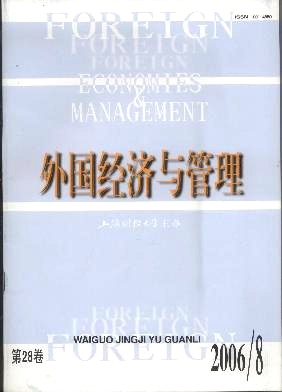新制度学派组织与环境关系观述评
外国经济与管理 2006 年 第 28 卷第 08 期, 页码:10 - 18
摘要
参考文献
摘要
新制度学派从组织领域的视角探讨了组织与制度环境的关系问题。一方面,制度环境通过合规性机制促成了组织间的模仿和同构;另一方面,组织在一系列权变因素的影响下,会对制度环境进行主动性程度不等的妥协、抗拒甚至操纵。有极少数组织还通过成功的创新活动推动了制度环境的演化和变迁。此外,组织的技术环境和制度环境之间也存在互动和冲突关系。新制度学派同其他组织理论学派之间呈现出相互借鉴和融合的趋势。
[1]Astley,W Graham,van de Ven,and Andrew H.Central perspectives and debates in organization theory[J].Administra-tive Science Quarterly.1983,28(2):245-273.
[2]DiMaggio,Paul J,and Powell Walter W.The iron cage revisited:institutional isomorphism and collective rationality inorganization field[J].American Sociological Review,1983,48:147-160.
[3]Scott,W Richard.Institutions and organizations[M].Thousand Oaks,CA:Sage,1995.
[4]Suchman,Mark.Managing legitimacy:strategic and institutional approaches[J].Academy of Management Review,1995,20:571-610.
[5]Meyer,John W,and Rowen,Brian.Institutionalized organizations:formal structure as myth and ceremony[J].Ameri-can Journal of Sociology,1977,83(2):340-363.
[6]Galaskiewicz,Joseph,and Wasserman,Stanley.Mimetic process within an inter-organizational field:an empirical test[J].Administrative Science Quarterly,1989,34(3):454-479.
[7]周雪光.组织社会学十讲[M].北京:中国社会科学文献出版社,2003.
[8]Han,Shin Kap.Mimetic isomorphism and its effect on the audit service market[J].Social Forces 1994,73:637-663.
[9]Oliver,Christine.Strategic responses to institutional processes[J].Academy of Management Review,1991,16:145-179.
[10]Tolbert,Pamela,and Zucker Lynn.Institutional sources of change in the formal structure of organizations:the diffu-sion of civil service reform[J].Administrative Science Quarterly,1983,28:22-39.
[11]Scott,W Richard.The adolescence of institutional theory[J].Administrative Science Quarterly,1987,32(4):493-511.
[12]Kondra,Alex Z,and Hinings C R.Organizational diversity and change in institutional theory[J].Organization Studies,1998,19(5):743-767.
[13]Hannan,Michael T,and Freeman,John.The Population ecology of organizations[J].American Journal of Sociology,1977,82(5):929-964.
[14]Hannan,M T,and Freeman,J.Structural inertia and organizational change[J].American Sociological Review,1984,49:149-164.
[15]Pfeffer,J,and Salancik,G R.The external control of organizations:a resource dependence perspective[M].NewYork:Harper and Row,1978.
[16]Clemens,Bruce W,and Douglas,Thomas J.Understanding strategic responses to institutional pressures[J].Journal ofBusiness Research,2005,58:1205-1213.
[17]Xu Dean,and Shenkar,Oded.Institutional distance and the multinational enterprise[J].Academy of Management Re-view,2002,(27)4:608-618.
[18]Parkhe,Arvind.Institutional environments,institutional change and international alliances[J].Journal of InternationalManagement,2003,9:305-316.
[19]Oliver,Christine.The antecedents of deinstitutionalization[J].Organization Studies,1992,13(4):563-588.
[20]Krieg,Randall G.A social contract for deinstitutionalization[J].Journal of Social Philosophy,2003,34(3):475-486.
[21]Delbridge,Rick,and Edwards,Tim.Actors and roles in processes of deinstitutionalization and reinstitutionalization[J].Management Research News,2002,25:8-10.
[22]Blum,Terry C,Fields,Dail L,and Goodman,Jodi S.Organization-level determinants of women in management[J].Academy of Management Journal,1994,37(2):241-268.
[23]Gooderham,Paul N,Nordhaug,Odd,and Ringdal,Kristen.Institutional and rational determinants of organizationalpractices:human resource management in European firms[J].Administrative Science Quarterly,1999,44(3):507-531.
[2]DiMaggio,Paul J,and Powell Walter W.The iron cage revisited:institutional isomorphism and collective rationality inorganization field[J].American Sociological Review,1983,48:147-160.
[3]Scott,W Richard.Institutions and organizations[M].Thousand Oaks,CA:Sage,1995.
[4]Suchman,Mark.Managing legitimacy:strategic and institutional approaches[J].Academy of Management Review,1995,20:571-610.
[5]Meyer,John W,and Rowen,Brian.Institutionalized organizations:formal structure as myth and ceremony[J].Ameri-can Journal of Sociology,1977,83(2):340-363.
[6]Galaskiewicz,Joseph,and Wasserman,Stanley.Mimetic process within an inter-organizational field:an empirical test[J].Administrative Science Quarterly,1989,34(3):454-479.
[7]周雪光.组织社会学十讲[M].北京:中国社会科学文献出版社,2003.
[8]Han,Shin Kap.Mimetic isomorphism and its effect on the audit service market[J].Social Forces 1994,73:637-663.
[9]Oliver,Christine.Strategic responses to institutional processes[J].Academy of Management Review,1991,16:145-179.
[10]Tolbert,Pamela,and Zucker Lynn.Institutional sources of change in the formal structure of organizations:the diffu-sion of civil service reform[J].Administrative Science Quarterly,1983,28:22-39.
[11]Scott,W Richard.The adolescence of institutional theory[J].Administrative Science Quarterly,1987,32(4):493-511.
[12]Kondra,Alex Z,and Hinings C R.Organizational diversity and change in institutional theory[J].Organization Studies,1998,19(5):743-767.
[13]Hannan,Michael T,and Freeman,John.The Population ecology of organizations[J].American Journal of Sociology,1977,82(5):929-964.
[14]Hannan,M T,and Freeman,J.Structural inertia and organizational change[J].American Sociological Review,1984,49:149-164.
[15]Pfeffer,J,and Salancik,G R.The external control of organizations:a resource dependence perspective[M].NewYork:Harper and Row,1978.
[16]Clemens,Bruce W,and Douglas,Thomas J.Understanding strategic responses to institutional pressures[J].Journal ofBusiness Research,2005,58:1205-1213.
[17]Xu Dean,and Shenkar,Oded.Institutional distance and the multinational enterprise[J].Academy of Management Re-view,2002,(27)4:608-618.
[18]Parkhe,Arvind.Institutional environments,institutional change and international alliances[J].Journal of InternationalManagement,2003,9:305-316.
[19]Oliver,Christine.The antecedents of deinstitutionalization[J].Organization Studies,1992,13(4):563-588.
[20]Krieg,Randall G.A social contract for deinstitutionalization[J].Journal of Social Philosophy,2003,34(3):475-486.
[21]Delbridge,Rick,and Edwards,Tim.Actors and roles in processes of deinstitutionalization and reinstitutionalization[J].Management Research News,2002,25:8-10.
[22]Blum,Terry C,Fields,Dail L,and Goodman,Jodi S.Organization-level determinants of women in management[J].Academy of Management Journal,1994,37(2):241-268.
[23]Gooderham,Paul N,Nordhaug,Odd,and Ringdal,Kristen.Institutional and rational determinants of organizationalpractices:human resource management in European firms[J].Administrative Science Quarterly,1999,44(3):507-531.
引用本文
费显政. 新制度学派组织与环境关系观述评[J]. 外国经济与管理, 2006, 28(8): 10–18.
导出参考文献,格式为:





 7382
7382  0
0

